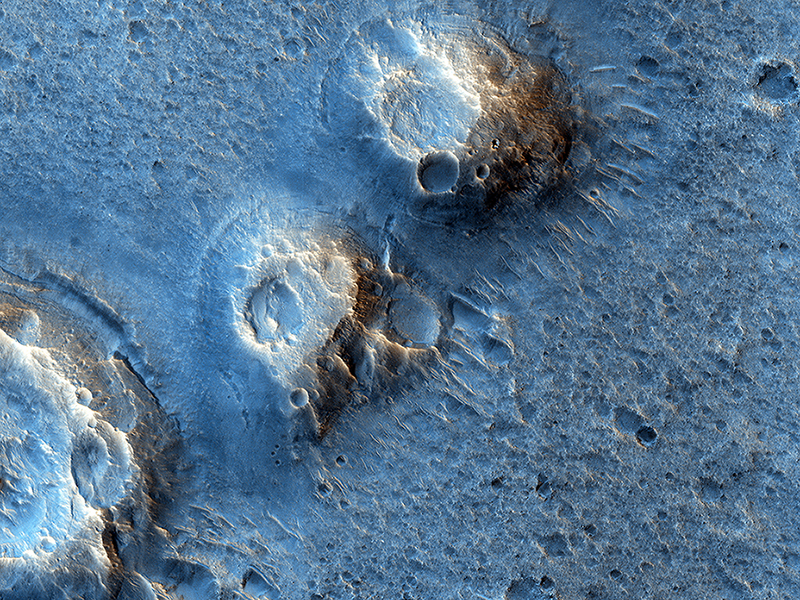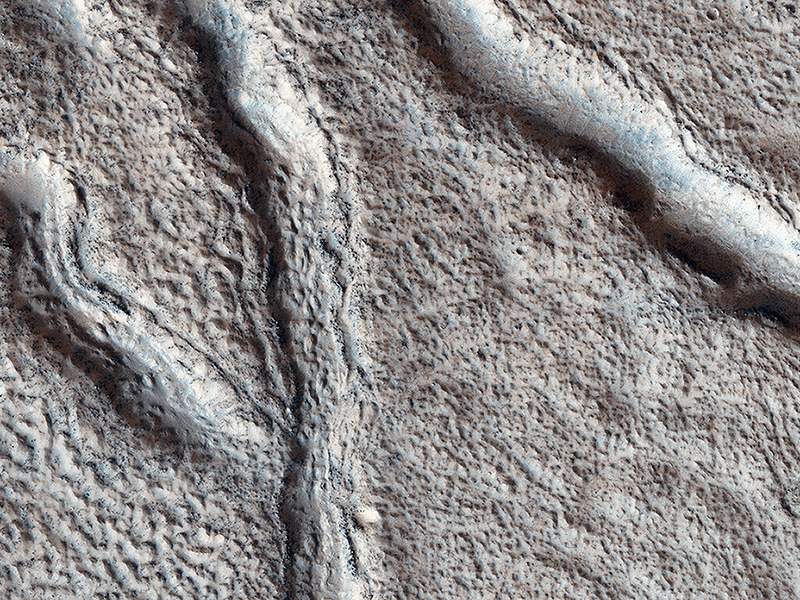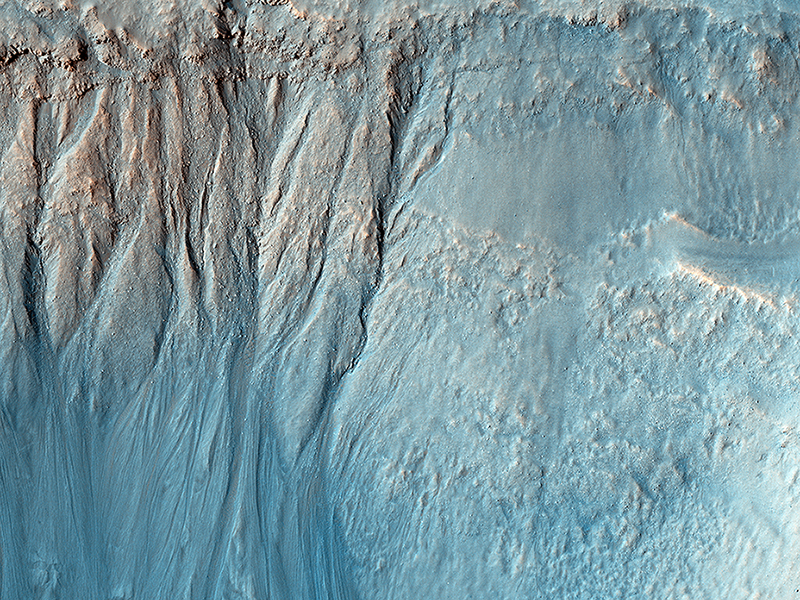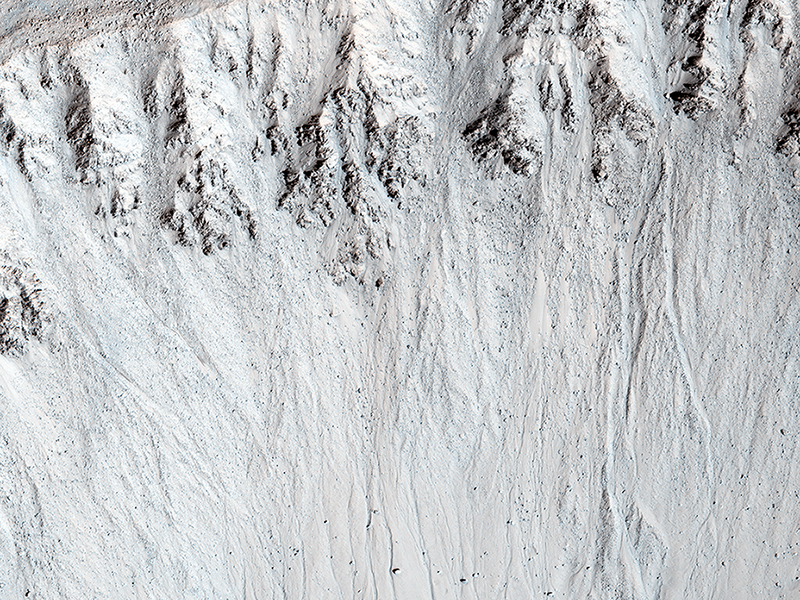Alfred McEwen wrote:Ares 3 and The Martian (ESP_026086_2115) (HiClip)
In “The Martian” by Andy Weir (watch for the movie in late 2015), stranded astronaut Mark Watney spends most of his time at the “Ares 3” site in southern Acidalia Planitia. The book describes Acidalia as flat and easy to drive over; he even drives to the Pathfinder landing site and back.
This region of Mars is actually far more diverse, interesting, and hazardous to drive over than depicted in the novel. These two images (this observation and ESP_019783_2115) are close to the Ares 3 landing site as shown in a map at the front of the novel, and shows many mounds, perhaps ancient volcanoes resulting from lava-water interaction or eruption of muddy sediments.
Much of Acidalia Planitia is covered by dense fields of boulders up to several meters high that would be difficult to drive around. There are also fissures associated with giant polygons, with steep rocky slopes that would be impassable. There are elongated fields of dense secondary craters where the surface is extremely rough at scales near the size of the rover. When our hero travels into Arabia Terra it is described as much rockier than Acidalia, but the the opposite is generally true: much of Arabia is dust mantled and smooth at the scale of a rover.
People commonly assume that smooth at large scales (kilometers) means smooth at small scales (meters to tens of meters). Often on Mars, the exact opposite is seen: large flat low areas are more wind-scoured, removing fine materials and leaving rocks and eroded bedrock.
HiRISE Science Team wrote:Cracks in a Debris Apron (ESP_039384_2100) (HiClip)
The objective of this observation is to investigate the nature of large fissures in a smooth apron around a mound in the Phlegra region.
The apron could be (or could have been) ice-rich, so one possibility is that the fissures are related to ice loss. Based on radar data from MRO combined with studies of the region's geology from other orbiters, scientists think that extensive glaciers covered this region several hundred million years ago.
This caption is based on the original science rationale.
HiRISE Science Team wrote:Gullies and Layers in a Crater Near Mariner Crater (ESP_039555_1430) (HiClip)
Gullies are commonly found in the southern mid-latitudes of Mars. In this image they start near top of a long ridge, and descend into an impact crater that lies at the bottom of the ridge, moving through a rocky layer along the way. Below the layer, the surface is dark and blue in HiRISE enhanced color, suggesting that it is easily erodible sand coating the crater wall.
The topography here is also interesting. There are two main features, an impact crater and a long trough called a graben, formed when the surface drops down between two faults. The eastern side of the crater is clearly cut by faulting, distorting the circular shape. On the north side, the crater rim is below the top of the graben fault. The crater could have dropped into the trough as it formed, but it is also possible that the trough partially formed before the crater and continued to widen later.
Colin Dundas wrote:Recurring Slope Lineae in Raga Crater (ESP_040028_1315) (HiClip)
This image covers Raga Crater, the location of well-studied recurring slope lineae (RSL). RSL are dark flows that disappear and re-form every Mars year at certain locations.
A closeup image compares the dark flows at the same time in three consecutive Mars years. We can see that the pattern of lineae is nearly the same every year, but in the latest image they are slightly shorter.
Comparisons like these will help the HiRISE team learn how much the flows vary from year to year, as well as why they are different.
Credit: NASA/JPL/University of Arizona
<< Previous HiRISE Update



